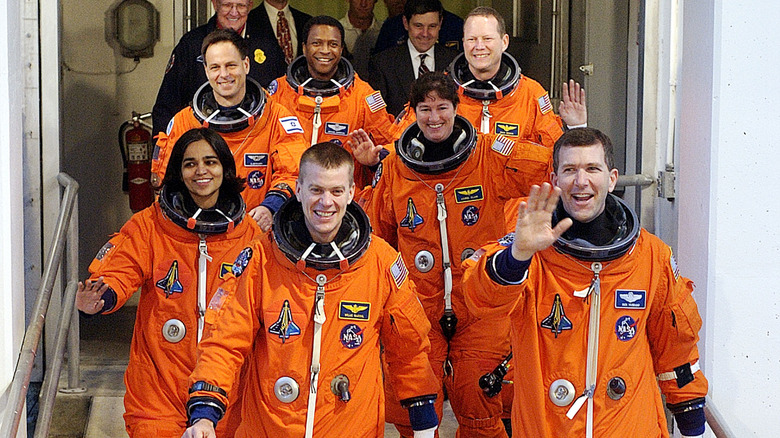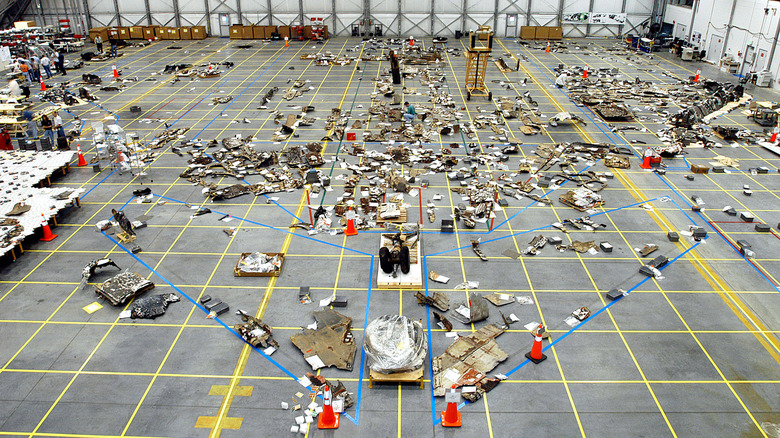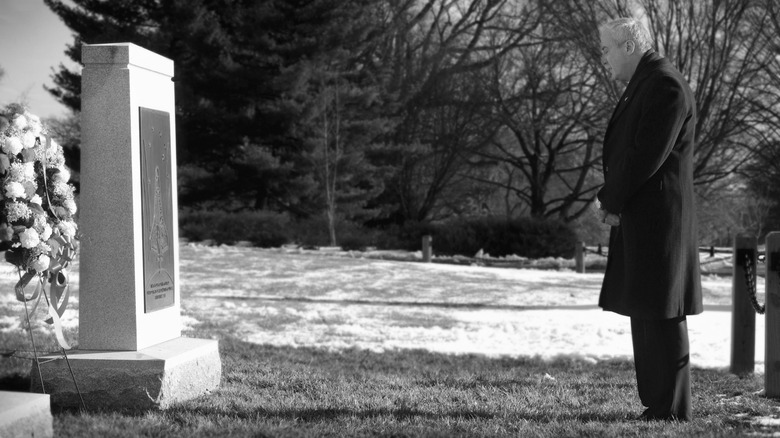Did The Space Shuttle Columbia Crew Die Instantly?
The 2003 Columbia space shuttle disaster was the last shuttle-related catastrophe of its kind, one that by 2011 had shuttered NASA's shuttle program. Like the 1986 Challenger disaster before it, and the 1967 Apollo 1 disaster before that, all crew members on the Columbia died. But while the Challenger shuttle tore apart during liftoff, and Apollo 1 burned up on the launch platform even before it took off, the Columbia made it to space, completed its 16-day scientific mission investigating the effects of microgravity, and was on its way back home to Earth. Sixteen minutes before the shuttle was due to land it lost contact with mission control and tore apart.
The Columbia and its crew were victims of faulty mechanical engineering and bad luck. A piece of foam had ripped off the shuttle during liftoff and struck the shuttle's left wing. NASA said not to worry, and the crew simply went about its business in orbit. During reentry, the shuttle showed signs of overheating, and the ignored foam incident created a cascade of failures that caused the ship to rip apart. Piece by piece, with its seven-person crew inside, the Columbia descended to Earth and was scattered across Texas and Louisiana.
While it's easy to imagine that the crew of the Columbia died immediately when their shuttle started to break apart, that wasn't the case. The shuttle didn't explode — it ripped apart. According to NASA's own 400-page report, the crew remained alive but likely unconscious, and died from "five events with lethal potential."
'Five events with lethal potential'
It's not the case that the crew members of the Columbia died from any one specific event, nor could we know that, anyway. As NASA's official 400-page report said, they died from a confluence of "lethal events" as their shuttle fell to Earth. The first event was "depressurization of the crew module," meaning that the shuttle ripped open and lost air. This would have made the crew members lose consciousness on the spot. Then, the module started spinning — the second event — which might have been alright except that the shuttle didn't come equipped with head restraints. In other words, unlike a roller coaster there was nothing in place to protect their necks.
At that point, any crew members remaining alive would have been subjected to the third lethal event: "separation from the crew module and the seats with associated forces, material interactions, and thermal consequences." That is, the crew flew out of their seats, or the seats broke off from the module while they were still seated. NASA described this event as the "least understood," and recommended future shuttles be designed to allow for the least possible catastrophic disintegration if some similar disaster happened.
With all air gone and life support lost, the crew would have asphyxiated and been subjected to the kind of atmospheric temperatures and conditions that a human body was never meant to endure. Finally, no one could have survived the impact with the ground. That was the fifth and final event.
Recovered, memorialized, and honored
The Columbia crew might not have died instantly when their shuttle started to break apart, but no one survived the impact with Earth. When the shuttle lost contact with mission control it was about 200,700 feet above the ground and traveling at 18 times the speed of sound — that's 12,500 miles per hour. That means the Columbia and its crew were in the mesosphere, the middle of Earth's five atmospheric layers. We also know that they were about 16 minutes from touching down. All in all, it seems unlikely that many, if any, crew members survived the descent to Earth only to die on impact.
At this point, NASA has released numerous documents, fact sheets, press releases, and more related to the Columbia disaster aside from its official, 400-page report. Per the George W. Bush Presidential Center, President Bush in 2003 memorialized the Columbia's crew by saying, "The cause in which they died will continue. Mankind is led into the darkness beyond our world by the inspiration of discovery and the longing to understand."
The remains of the crew — David M. Brown, Rick D. Husband, Laurel B. Clark, Kalpana Chawla, Michael P. Anderson, William C. "Willie" McCool, and Ilan Ramon — each met different ends according to the wishes of loved ones. Chawla, for instance, was cremated and had her ashes scattered at Utah's Zion National Park. Brown, Clarke, and Anderson, meanwhile, were interred at Arlington National Cemetery near the cemetery's Columbia memorial, and McCool and Ramon were buried in Israel and Washington, respectively.


